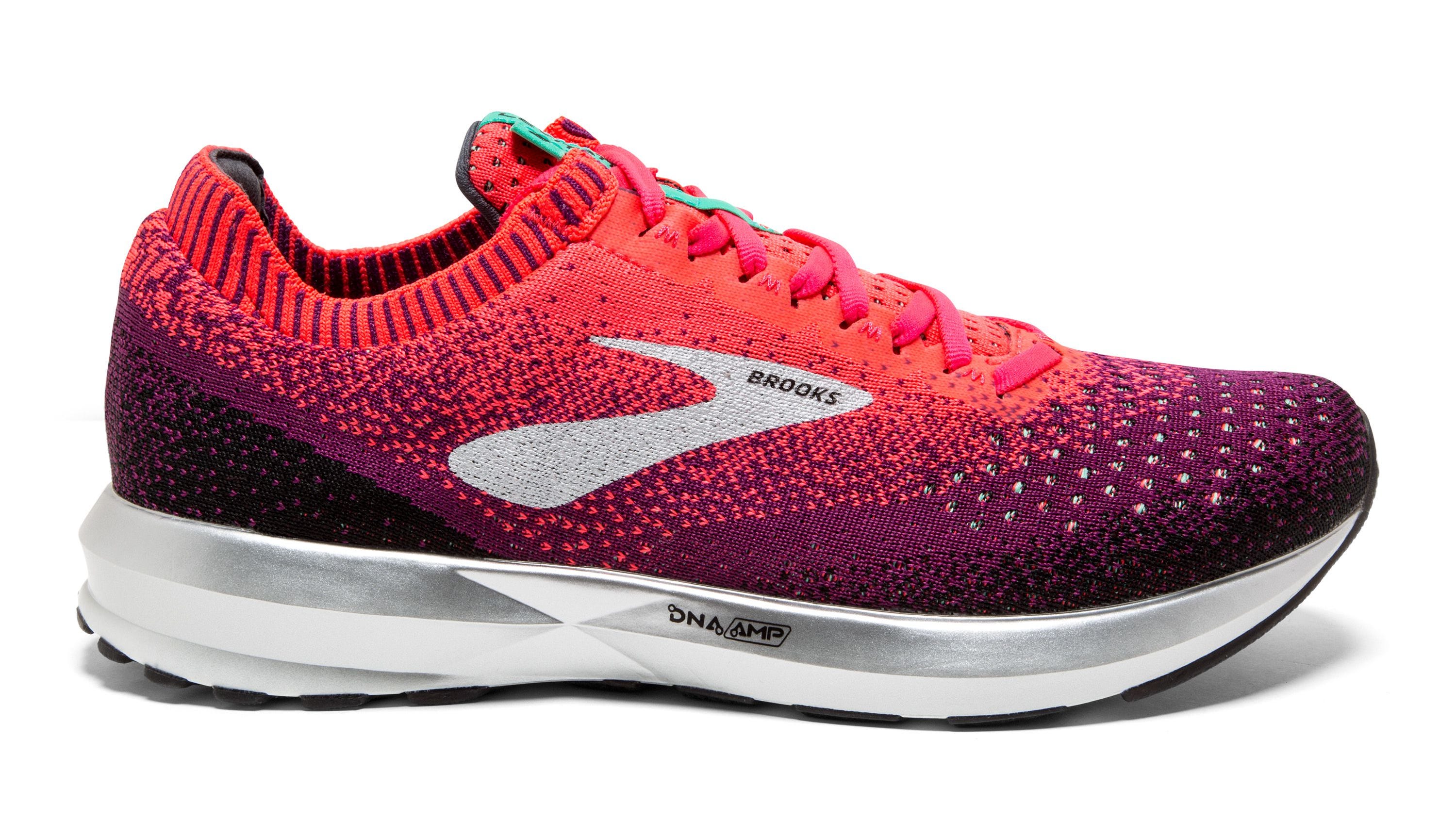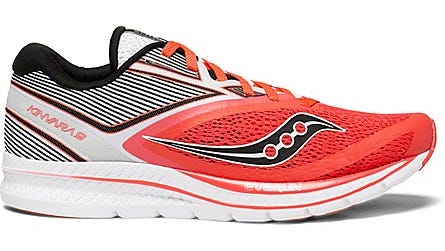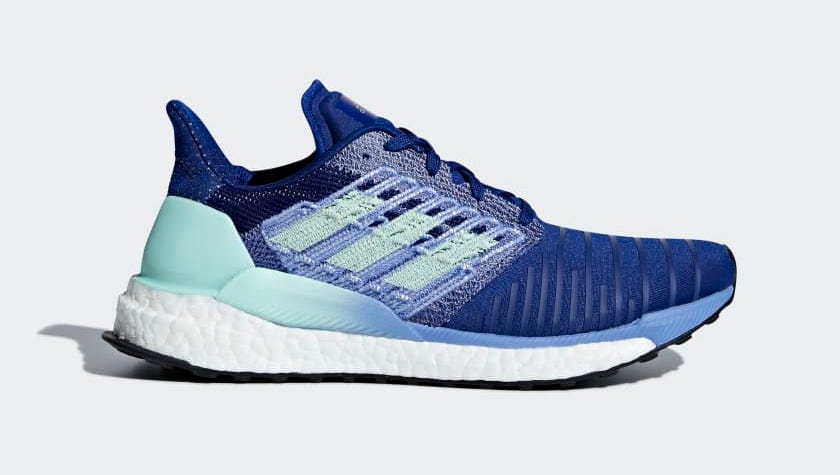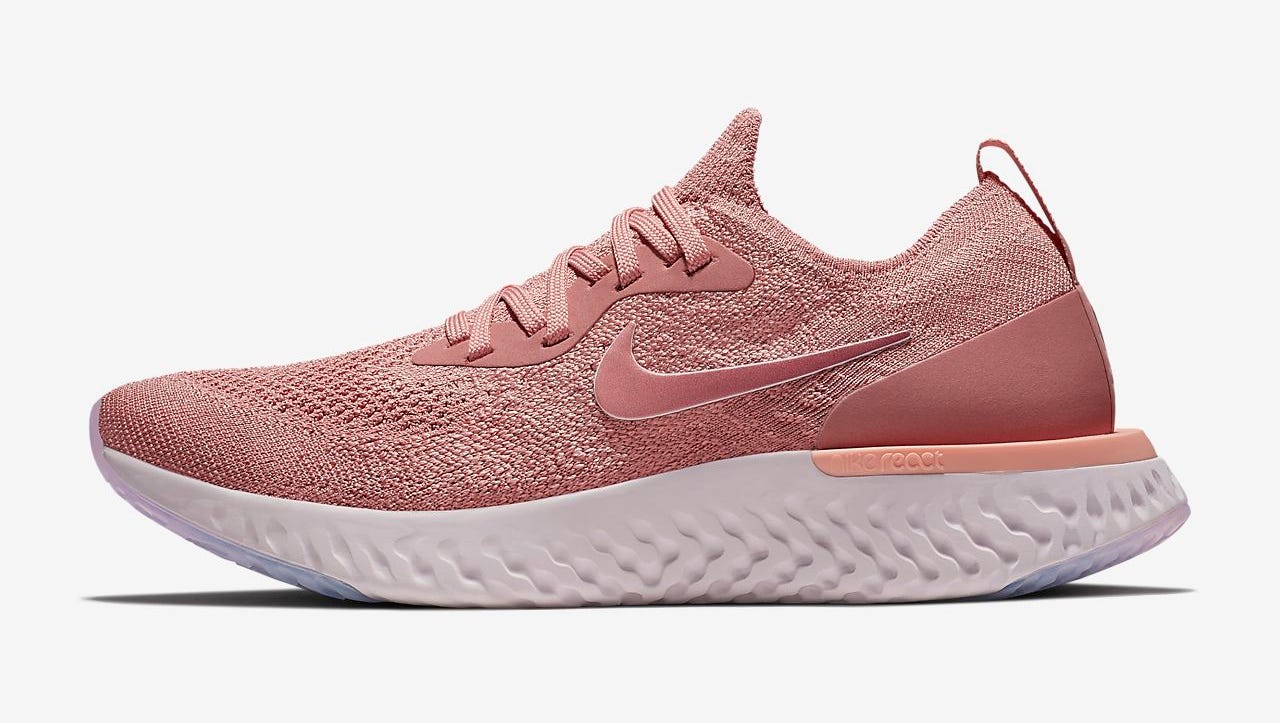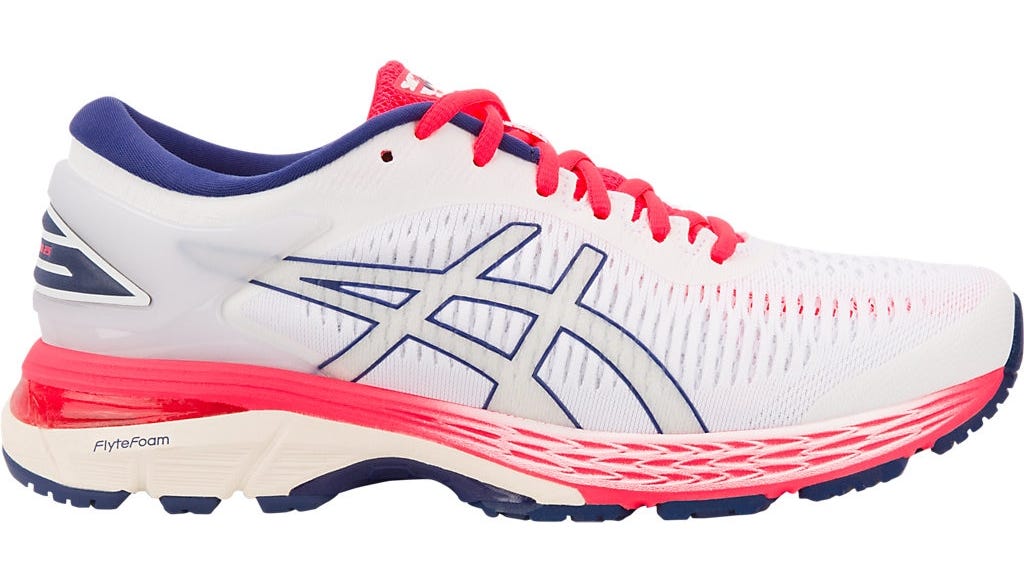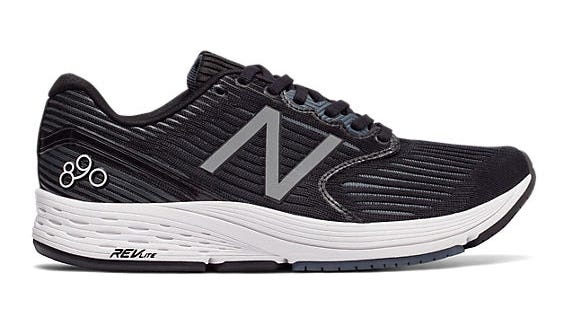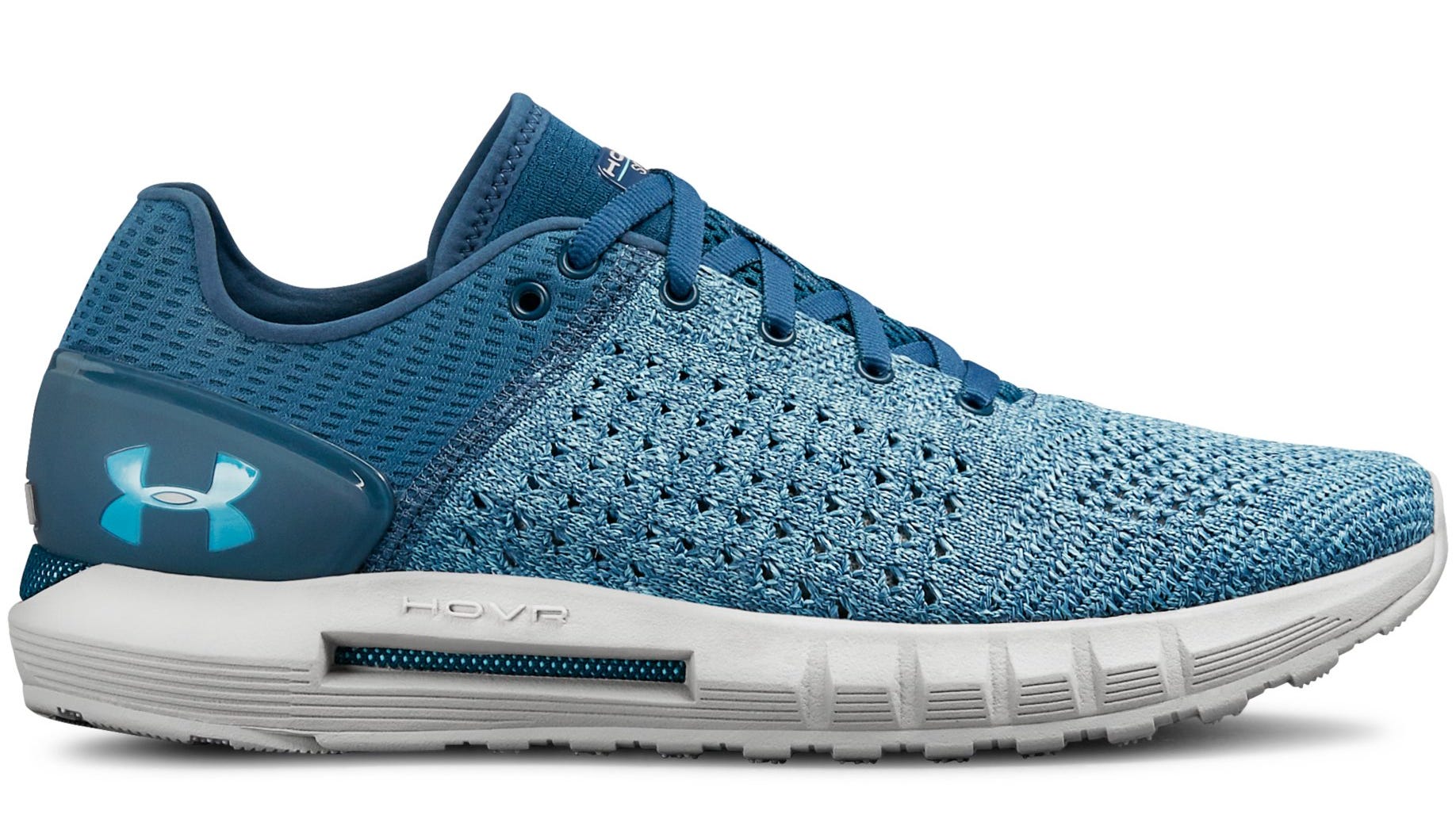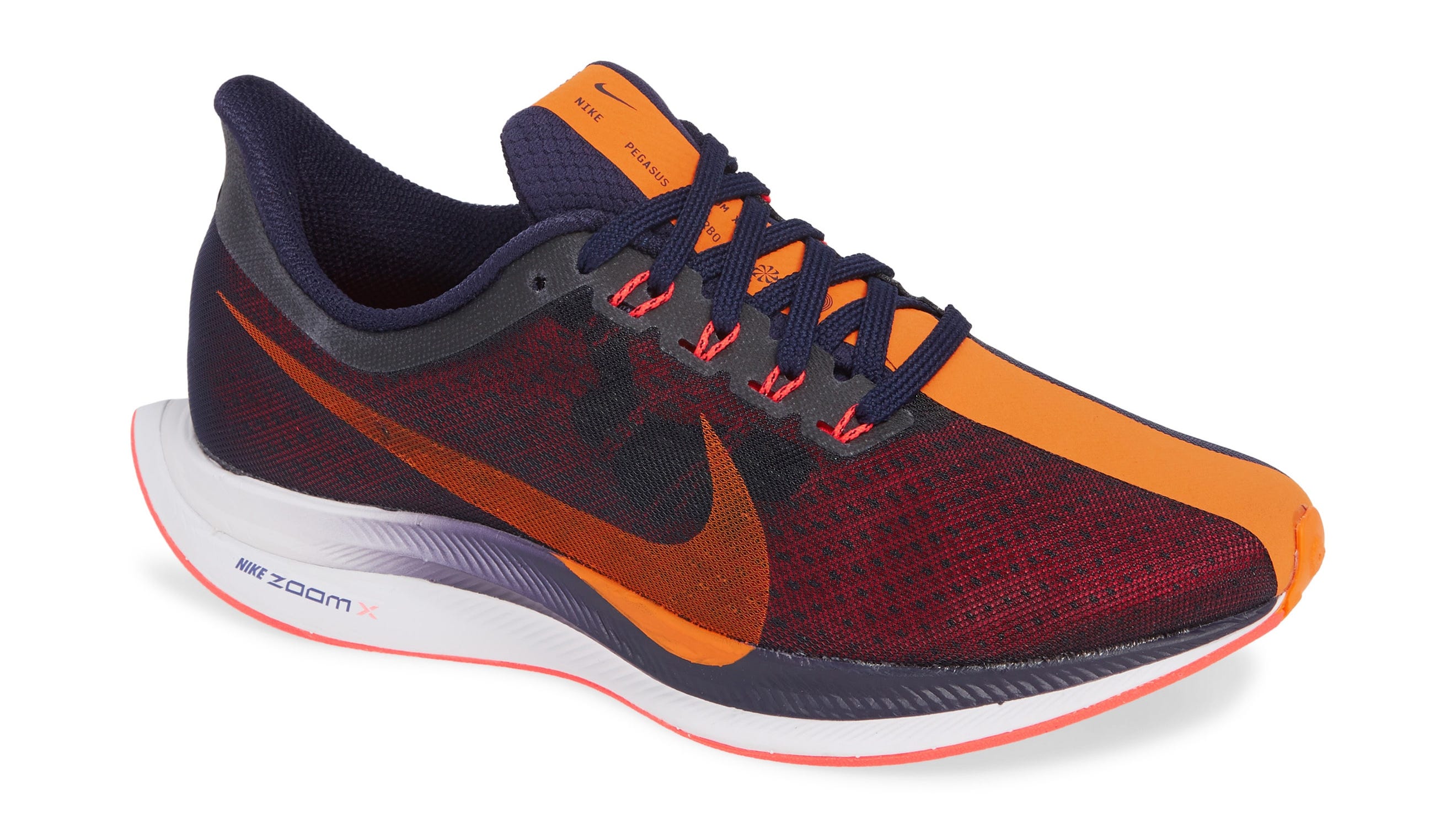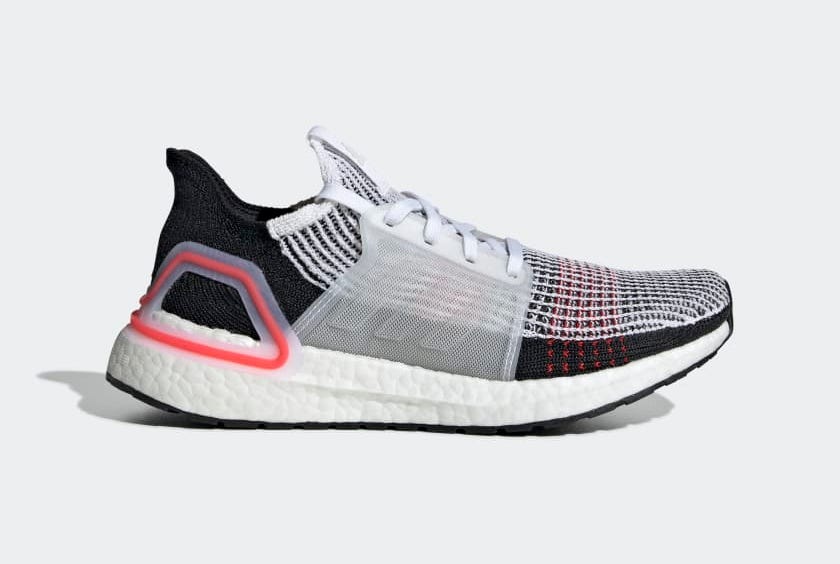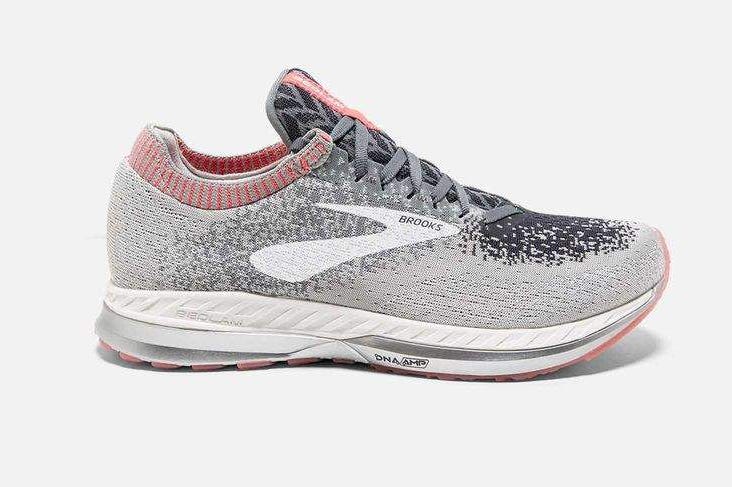The 15 Best Running Shoes Of The Year


There are currently 49 pairs of sneakers in my closet (yes, 49). I don’t say that to brag, but rather to reassure you that I know what I’m talking about. Because when it comes to running, a truly no-frills sport, there’s only one piece of gear that really matters: your running shoes. And I’ve tested plenty of them.
This year, shoes got faster, lighter, and more supportive than ever. These are the best running shoes for women in 2018:
Best for Extra Pep in Your Step: Brooks Levitate 2
The second generation of the Levitate—which came out in July—is constructed with the brand’s DNA AMP midsole made with foam and rubber, which feels comfortable and adds some extra bounce to your stride. There’s also a sleek new Fit Knit upper, with a heel wrap and tab to shield your Achilles from irritation. A flexible, arrow-point pattern on the outsole also helps you move fast from heel to toe to make your stride as efficient as possible.
Best for Long-Distance Speed: Saucony Kinvara 9
Kinvara’s newest upgrade debuted in March, and for such a lightweight shoe, it’s incredibly cushy. That’s thanks to the brand’s EVERUN Topsole technology, an extra layer of cushioning in the midsole that guarantees more bounce and flexibility—especially great for maintaining race pace during endurance events.
Best for Long Runs: Adidas Solarboost
The Solarboost made its debut in May, as a more supportive sister to the brand’s uber-popular Ultraboost. The cushioned midsole is the same as the Ultraboost, but the upper is more structured, with a lightweight fabric that locks your foot in. Plus, there’s extra stability around the heel to help propel you forward so you feel great during those super-long runs.
Best for Tempo Runs: Nike Epic React
In February, Nike’s first running shoe to feature a proprietary foam, called Nike React, hit shelves. It’s light for a foam shoe, and the sole is cushiony without being too soft, so you’ll feel protected but still springy while on the run.
Best for Recovery Runs: Hoka One One Clifton 5
Hoka’s made its name on shoes that promise plenty of cushion. But the latest iteration of the Clifton, released in June, delivers major support without adding a ton of weight. That curved sole keeps your stride smooth, and the redesigned upper keeps your foot snug and centered.
Best for Stability: Asics Gel-Kayano 25
The 25th update to Asics’ classic long-distance running shoe came out in May. Sleeker and more responsive than its predecessors, this one uses a mix of FlyteFoam Lyte, a material designed to provide plenty of stability, and FlyteFoam Propel, one that absorbs shock and makes your toe-off bouncier—without adding any extra weight.
Best for Any Run: New Balance 890v6
The most recent version of New Balance’s 890 came out in March, and it’s the lightest yet. It’s sleek and lightweight enough to keep you moving fast, but the REVlite midsole foam still offers plenty of cushioning as you hit the ground.
Best for Short Runs: Puma Hybrid Rocket
Puma just released the Hybrid in July, and it features two of their technologies—IGNITE FOAM and NRGY beads—to provide serious cushioning. It’s meant for shorter runs, but the retro design will look great with jeans when you’re running errands, too.
Best for 10-Ks: Under Armour HOVR Sonic
In February, Under Armour debuted a UA HOVR Foam, a super-light midsole foam. That foam, plus the surrounding material—what UA calls an “energy web”—make the shoe great for speed work, but still padded enough for longer runs.
Best for Everyday Speed: Nike Zoom Pegasus Turbo
Pro runner Shalane Flanagan races in the Nike Zoom Vaporfly 4%—but runners who aren’t chasing records will love the more accessible Pegasus Turbo, which was released in July. The shoe uses the same comfy ZoomX foam technology in the midsole as the Vaporfly. It also has a light mesh upper that’s breathable but also super-supportive, along with a aerodynamically shaped heel that’s built to boost your speed. The rubber sole also features technology that will absorb the impact, no matter how fast your racing down the road.
Best for Walking Around In After a Long Run: Adidas Ultraboost
In December, Adidas re-released the original UltraBOOST. While the brand’s well-known Boost foam offers serious cushioning without weighing you down, it was the iconic 2015 silhouette that got both runners and sneaker-heads most excited.
Best for Neutral Runners: Mizuno Wave Shadow 2
Mizuno’s Wave Shadow 2 was released in July with a redesigned mesh upper that’s even more lightweight than the first version (the entire shoe weighs just 7.4 ounces). It feels fast thanks to tech in the sole that gives you a boost with every step—and because it has two layers of foam, the shoe also has plenty of cushiness.
Best for a 5K: Asics DynaFlyte 3
Asics is typically known for its heavier, more supportive shoes, but the Asics DynaFlyte 3 is super lightweight—in fact, the foam is 55 percent lighter than the industry standard. But it doesn’t skimp on the support the brand is known for, thanks to a re-designed stretchy mesh upper and gel cushioning in the back of the shoe that absorbs shock and helps you keep your stride on point.
Best for Gait Correction: Brooks Bedlam
Brooks debuted the Bedlam in September, making it the brand’s first new shoe to feature their new midsole technology, DNA LOFT. It’s a similar feel to the DNA AMP found in the brand’s Levitate 2 sneaker, but it uses a mix of EVA foam, rubber, and air for a ride that’s a little softer and more protective. It also features Brooks’ GuideRails technology, which guides your feet into proper alignment.
Best for Serious Stability: Hoka One One Arahi 2
In January, Hoka One One released the second iteration of the Arahi shoe. This one takes their signature chunkiness to the next level with the “J-Frame” midsole, which uses even denser foam to provide extra (lightweight!) support, while helping to guide the foot through the natural gait cycle. Version two also got an all-new breathable upper that provides a snug fit, without restricting your foot in any way.
Source: Read Full Article
